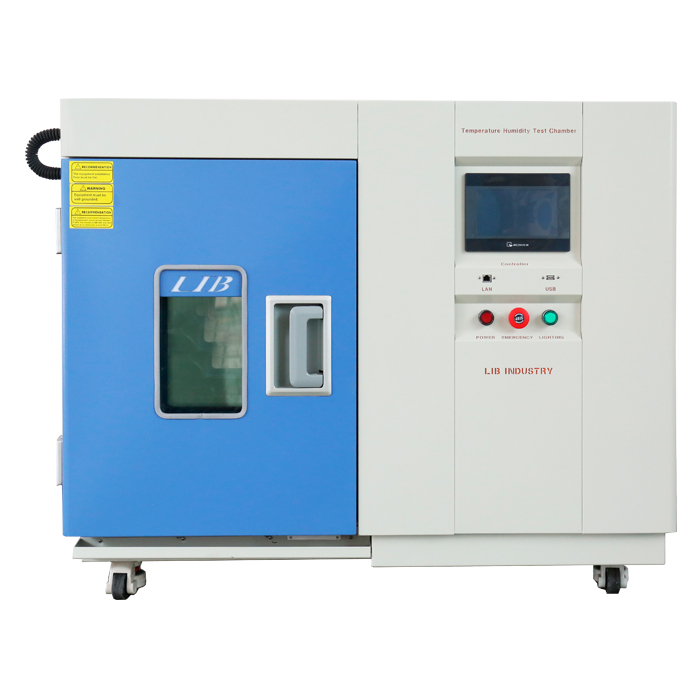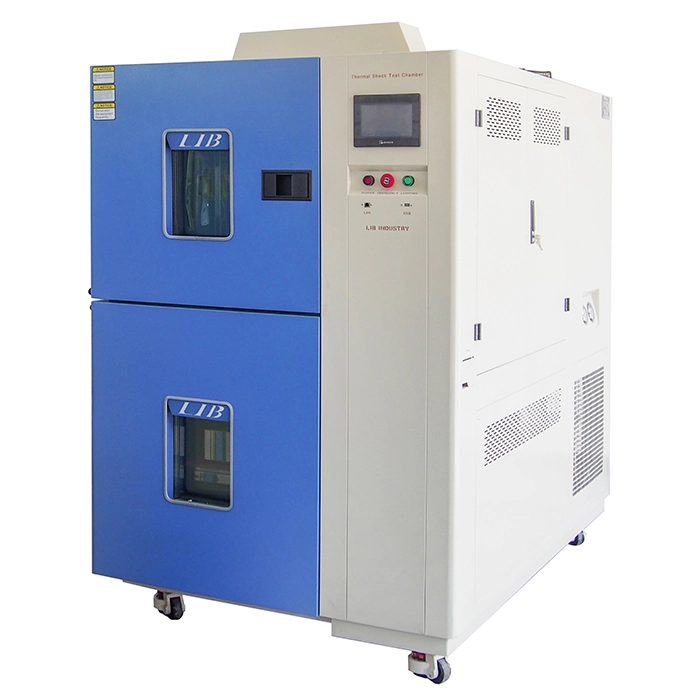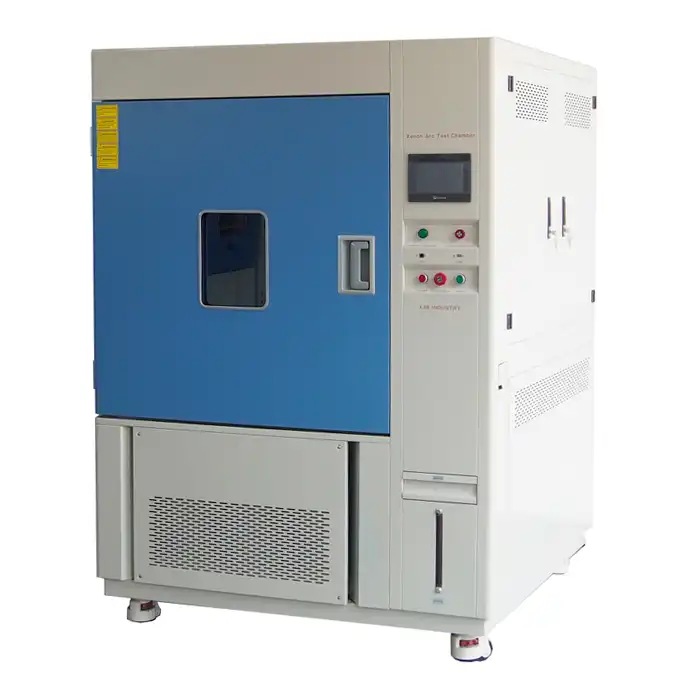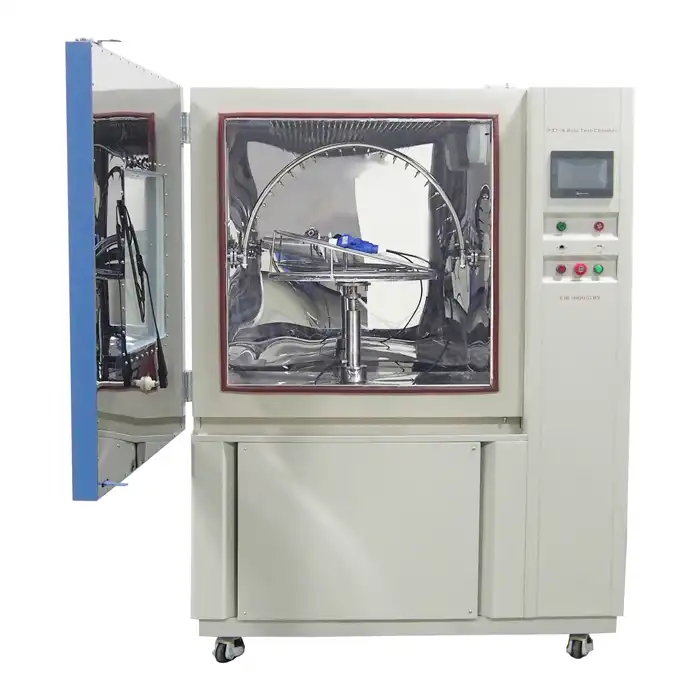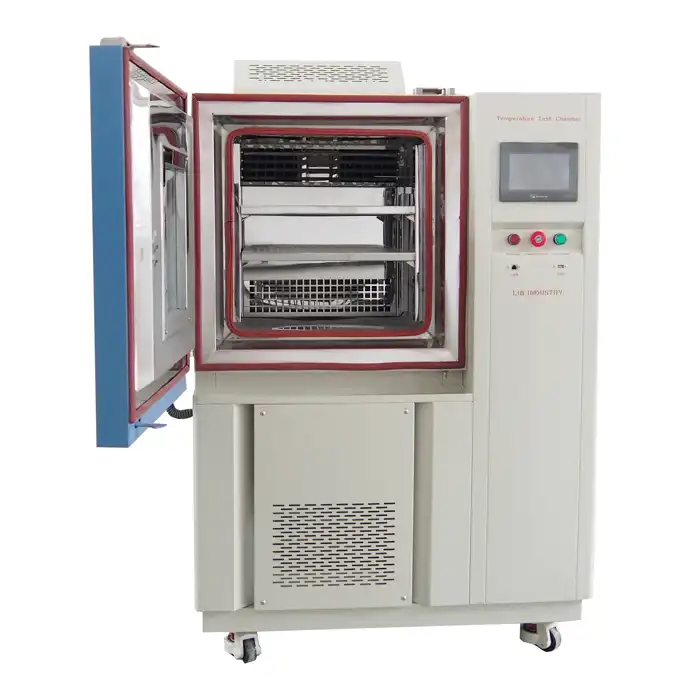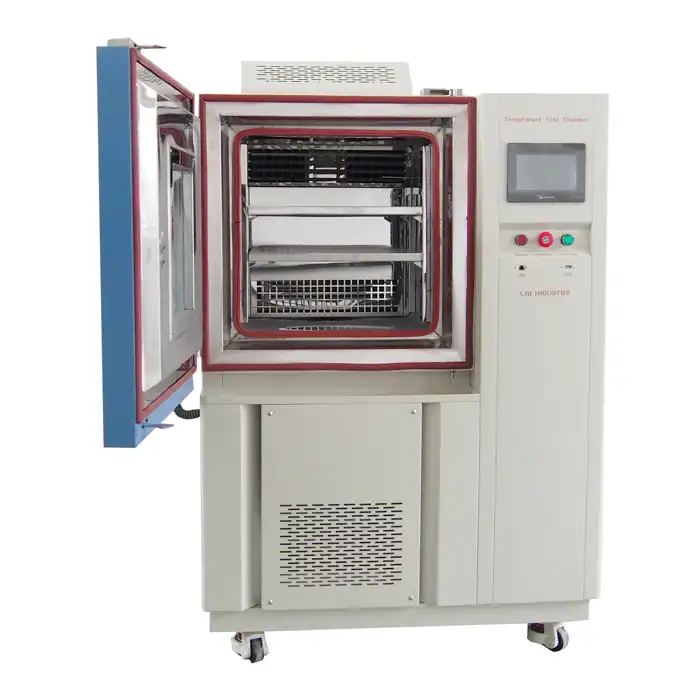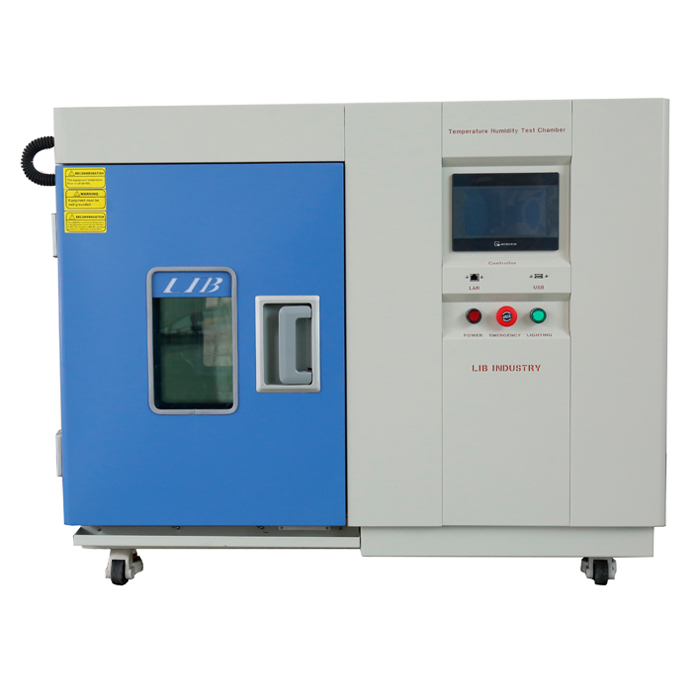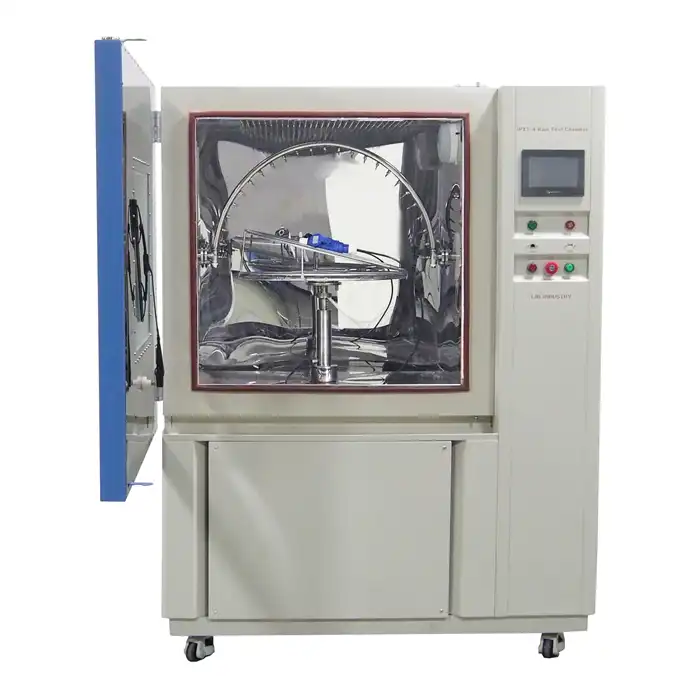What is the difference between Accelerated Weathering and natural weathering?
Accelerated weathering and natural weathering are two distinct approaches to evaluating material durability and performance over time. Natural weathering involves exposing materials to real-world environmental conditions, allowing nature to take its course. This process can take months or even years to yield significant results. In contrast, accelerated weathering utilizes specialized equipment, such as weathering chambers or accelerated weathering testers, to simulate and intensify environmental factors like UV radiation, temperature fluctuations, and moisture. This method dramatically speeds up the weathering process, enabling researchers and manufacturers to obtain valuable data in a fraction of the time required for natural weathering. While both approaches have their merits, accelerated weathering offers quicker results and more controlled testing conditions, making it an invaluable tool for product development and quality assurance in various industries.
Understanding Accelerated Weathering: Principles and Applications
The Science Behind Accelerated Weathering
Accelerated weathering is a sophisticated process that harnesses advanced technology to replicate and intensify natural weathering conditions. At its core, this method aims to simulate the effects of sunlight, moisture, and temperature on materials within a controlled environment. The primary goal is to expedite the degradation process that would typically occur over extended periods in natural settings.
The science underpinning accelerated weathering relies on the principle that materials undergo chemical and physical changes when exposed to environmental stressors. By amplifying these stressors in a controlled manner, researchers can observe and measure material degradation at an accelerated rate. This process involves carefully calibrated exposure to ultraviolet (UV) radiation, temperature cycling, and moisture variations, often in combination.
UV radiation, a key component in accelerated weathering, is particularly crucial as it mimics the sun's damaging effects on materials. High-intensity UV lamps in weathering chambers emit specific wavelengths of light that can trigger photochemical reactions in materials, leading to color fading, embrittlement, or structural weakening. The intensity and spectral distribution of these UV sources are meticulously controlled to ensure reproducible results.
Key Components of Accelerated Weathering Systems
Accelerated weathering systems, often referred to as weathering chambers or accelerated weathering testers, are sophisticated pieces of equipment designed to create and maintain specific environmental conditions. These systems typically comprise several key components:
- UV Light Source: High-output fluorescent lamps or xenon arc lamps that simulate solar radiation.
- Temperature Control System: Precision heating and cooling elements to create thermal cycling.
- Humidity Control: Mechanisms to regulate moisture levels, including water spray systems and humidity generators.
- Sample Mounting Apparatus: Specialized racks or holders to position test specimens for uniform exposure.
- Programmable Control Interface: Advanced software for setting test parameters and monitoring conditions.
These components work in concert to create a dynamic testing environment that can be tailored to specific material requirements or industry standards. The ability to fine-tune these parameters allows researchers to focus on particular degradation mechanisms or simulate specific geographic climates.
Applications Across Industries
The versatility of accelerated weathering makes it an indispensable tool across a wide spectrum of industries. Its applications are far-reaching and include:
- Automotive: Testing exterior paints, coatings, and plastic components for durability and color fastness.
- Construction: Evaluating the longevity of building materials, including roofing, siding, and sealants.
- Textiles: Assessing color stability and fabric integrity for both indoor and outdoor applications.
- Electronics: Testing the resilience of enclosures and components to environmental stressors.
- Aerospace: Evaluating materials used in aircraft exteriors and satellite components.
- Packaging: Assessing the durability and printability of labels and packaging materials.
In each of these fields, accelerated weathering provides crucial data that informs product development, quality control, and performance predictions. By subjecting materials to intense weathering conditions, manufacturers can identify potential weaknesses, optimize formulations, and enhance product longevity before market introduction.
Comparing Accelerated and Natural Weathering: Pros, Cons, and Considerations
Advantages of Accelerated Weathering
Accelerated weathering offers several significant advantages over natural weathering, making accelerated weathering tester an attractive option for many industries:
- Time Efficiency: Perhaps the most compelling benefit of accelerated weathering is its ability to compress years of natural exposure into weeks or months. This rapid turnaround allows for quicker product development cycles and faster market entry.
- Reproducibility: Weathering chambers provide consistent, controlled conditions that can be replicated across multiple tests. This level of consistency is challenging to achieve with natural weathering, where environmental factors can vary widely.
- Parameter Control: Researchers can isolate and manipulate specific environmental factors, such as UV intensity or humidity levels, to study their individual effects on materials. This granular control is not possible in natural settings.
- Year-Round Testing: Accelerated weathering is not bound by seasonal changes, allowing for continuous testing regardless of outdoor conditions.
- Cost-Effectiveness: While the initial investment in accelerated weathering equipment can be substantial, the long-term cost savings in terms of reduced testing time and increased throughput can be significant.
Limitations of Accelerated Weathering
Despite its many benefits, accelerated weathering is not without its limitations:
- Correlation with Real-World Performance: While accelerated tests can provide valuable insights, they may not always perfectly correlate with natural weathering results. Some degradation mechanisms may be overemphasized or underrepresented in accelerated conditions.
- Complexity of Natural Environments: Accelerated tests may struggle to fully replicate the complex interplay of factors present in natural environments, such as pollutants, biological factors, or varying weather patterns.
- Material-Specific Challenges: Certain materials may respond differently to accelerated conditions compared to natural weathering, requiring careful interpretation of results.
- Initial Costs: The acquisition and maintenance of sophisticated weathering chambers can represent a significant upfront investment for some organizations.
Synergies Between Accelerated and Natural Weathering
Rather than viewing accelerated and natural weathering as competing methodologies, many experts advocate for a complementary approach that leverages the strengths of both:
- Validation Studies: Natural weathering can be used to validate and refine accelerated testing protocols, ensuring that laboratory results align with real-world performance.
- Tiered Testing Strategies: Companies may employ accelerated weathering for rapid screening and development, followed by targeted natural exposure tests for final validation.
- Predictive Modeling: Data from both accelerated and natural weathering can be combined to develop more accurate predictive models of long-term material performance.
- Customized Testing Programs: Industry-specific standards often incorporate elements of both accelerated and natural weathering to provide a comprehensive assessment of material durability.
By recognizing the unique strengths and limitations of each approach, researchers and manufacturers can develop robust testing strategies that provide comprehensive insights into material performance and longevity.
Implementing Effective Weathering Tests: Best Practices and Future Trends
Designing Effective Weathering Test Protocols
Creating an effective weathering test protocol requires careful consideration of several factors to ensure meaningful and actionable results:
- Define Clear Objectives: Clearly articulate the goals of the weathering test, whether it's to evaluate color stability, mechanical properties, or overall durability.
- Select Appropriate Test Methods: Choose weathering methods that align with the intended application of the material. This may involve referencing industry standards or developing custom protocols.
- Determine Exposure Parameters: Set specific parameters for UV intensity, temperature cycles, humidity levels, and exposure duration based on the material's expected end-use environment.
- Establish Evaluation Criteria: Define quantifiable metrics for assessing material performance, such as color change (ΔE), gloss retention, or mechanical property thresholds.
- Include Control Samples: Incorporate unexposed control samples and reference materials to provide benchmarks for comparison.
- Plan for Interim Evaluations: Schedule periodic assessments throughout the test to track degradation progression and identify critical points of failure.
By meticulously planning the testing protocol, researchers can ensure that the results obtained from weathering chambers or accelerated weathering testers are both reliable and relevant to real-world applications.
Interpreting and Applying Weathering Test Results
The data generated from weathering chambers, whether accelerated or natural, requires careful interpretation to draw meaningful conclusions:
- Statistical Analysis: Apply appropriate statistical methods to analyze test data, accounting for variability and identifying significant trends.
- Correlation Studies: When possible, correlate accelerated weathering results with available natural weathering data to validate findings and refine predictive models.
- Consider Synergistic Effects: Evaluate how different environmental factors may interact to influence material degradation, rather than focusing on isolated parameters.
- Translate Results to Real-World Implications: Interpret test results in the context of practical applications, considering factors like maintenance requirements, replacement intervals, or warranty periods.
- Iterative Improvement: Use insights from weathering tests to inform material formulation adjustments, process improvements, or design modifications.
Effective interpretation of weathering test results can drive innovation, enhance product quality, and ultimately lead to more durable and sustainable materials.
Emerging Trends and Future Directions
The field of weathering testing continues to evolve, driven by technological advancements and changing industry needs:
- Advanced Spectral Matching: Next-generation weathering chambers are incorporating LED light sources that offer improved spectral matching to natural sunlight, enhancing test accuracy.
- Integration of Artificial Intelligence: AI and machine learning algorithms are being developed to analyze complex weathering data sets, identify patterns, and make predictive assessments.
- Multi-Factor Testing: There's a growing trend towards more complex test designs that simultaneously evaluate multiple environmental stressors, providing a more holistic assessment of material performance.
- Miniaturization and Portability: Compact, portable weathering testers are emerging, allowing for on-site testing and more flexible research applications.
- Sustainability Focus: Increased emphasis on sustainable materials is driving the development of weathering protocols specifically designed to evaluate eco-friendly alternatives.
- Digital Twin Technology: The concept of creating digital twins of materials undergoing weathering tests is gaining traction, allowing for more sophisticated modeling and prediction of long-term performance.
As these trends continue to shape the landscape of weathering testing, manufacturers and researchers must stay informed and adaptable to leverage the latest advancements in the field.
Conclusion
The distinction between accelerated weathering and natural weathering lies at the heart of material testing and quality assurance across numerous industries. While natural weathering provides real-world exposure data, accelerated weathering, facilitated by sophisticated weathering chambers and accelerated weathering testers, offers rapid, controlled, and reproducible results. By understanding the strengths and limitations of each approach, manufacturers can implement comprehensive testing strategies that combine the best of both worlds. As technology continues to advance, the field of weathering testing is poised for further innovation, promising even more accurate predictions of material performance and durability in the face of environmental challenges.
Contact Us
Ready to elevate your material testing capabilities? LIB Industry offers cutting-edge accelerated weathering solutions tailored to your specific needs. Our expert team can help you design and implement effective weathering test protocols that drive product innovation and quality assurance. Contact us today at info@libtestchamber.com to discover how our advanced weathering chambers can transform your research and development process.
References
1. Pickett, J. E., & Gardner, R. R. (2005). Reproducibility of Florida weathering data. Polymer Degradation and Stability, 90(3), 418-430.
2. Grossman, G. W. (1977). Correlation of laboratory to natural weathering. Journal of Coatings Technology, 49(633), 45-54.
3. Wypych, G. (2013). Handbook of material weathering. Elsevier.
4. Andrady, A. L., Hamid, S. H., Hu, X., & Torikai, A. (1998). Effects of increased solar ultraviolet radiation on materials. Journal of Photochemistry and Photobiology B: Biology, 46(1-3), 96-103.
5. Nichols, M. E., & Darr, C. A. (1998). Effect of weathering on the stress-strain behavior of automotive refinish coatings. Journal of Coatings Technology, 70(885), 69-77.
6. Köhl, M., Jorgensen, G., Brunold, S., Carlsson, B., Heck, M., & Möller, K. (2005). Durability of polymeric glazing materials for solar applications. Solar Energy, 79(6), 618-623.



